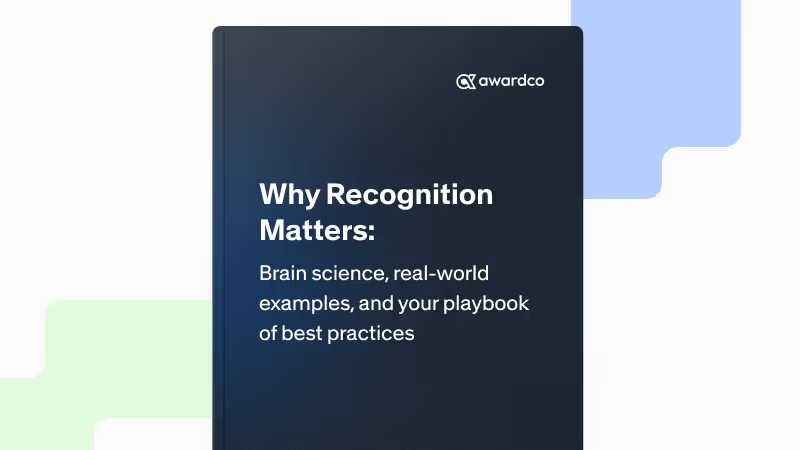Thanks for your message!
We will reach back to you as soon as possible.
Acknowledging the $438 billion elephant in the room
The modern workplace is one of fatigue. Employers are trying to squeeze as much productivity from a workforce wrung dry, and the result is frustration on both sides.
Gallup’s most recent State of the Global Workplace report shows these trends clearly:
- Global employee engagement has dropped to 21% (the first drop since the pandemic)
- Global employee life evaluations dropped to 33% (the first drop in a decade)
- Only 52% of North American employees say their thriving (which has steadily declined from 62% in 2017)
A separate study also shows that employee satisfaction has dropped to a miserable 18%, tying an all-time low, while employee intent to leave is at 51% (the highest in the past decade).
The world is full of stressed, burned out, and dissatisfied employees, leading to 62% disengagement and 17% active disengagement—which, according to Gallup, cost the world economy $438 billion in 2024.
It’s not all doom and gloom
While broader issues and workplace trends affect everyone, each business can flip the script and improve their employee experience. This is a vital point to remember: you have the power to increase engagement, satisfaction, productivity and even overall happiness for your employees.
While various solutions exist to help improve culture, one of the most impactful solutions available is more frequent, personal, and genuine employee recognition.
By digging into industry statistics and employee psychology, the truth of that statement becomes clear. In this paper, we’ll provide a comprehensive answer to the question, “Why recognition?”
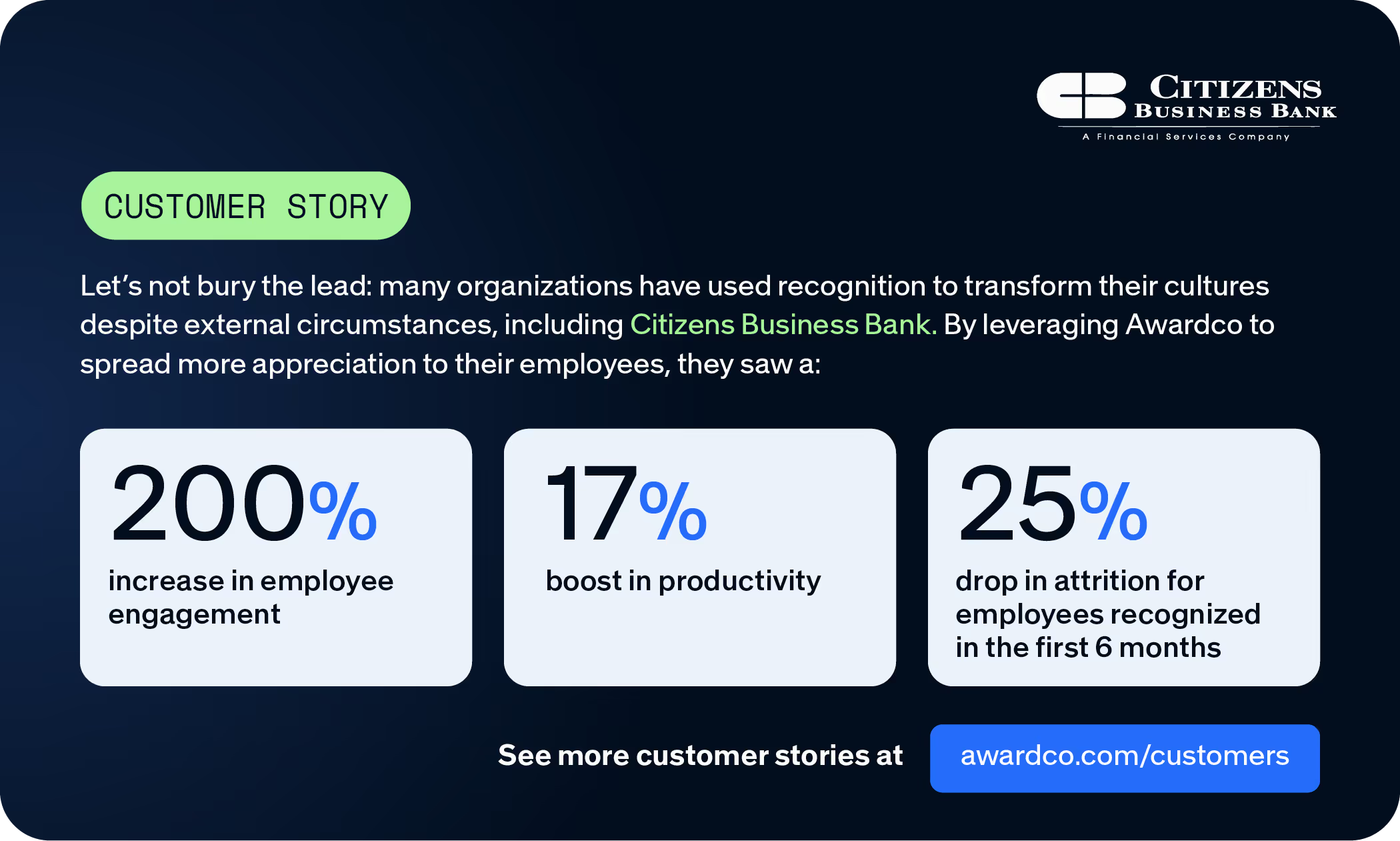
See more customer stories at awardco.com/customers.
Why employee recognition is THE solution for any business
Employee recognition solves employee disengagement and productivity woes, and we’re not just saying that because we’re in the industry. Effective recognition, at its core, meets the fundamental human need to feel valued, seen, accepted, and supported.
And when employees get those feelings from their employer, that’s when the magic really happens.
The stunning psychology of recognition on the human brain
To understand the why behind recognition, let’s first learn about how recognition improves the employee experience from the inside out.
Positive Recall Bias
When our brains focus on good things, such as gratitude, positivity, and feeling valued, we get better and better at recognizing those good things. This means frequent recognition will help employees focus on the positive things about themselves and the company, even during hard times.
Strengthened neural pathways
By engaging in recognition (both giving and receiving), our brains release serotonin and dopamine, two chemicals that positively impact motivation, mood, and willpower. By regularly engaging in recognition, our brains more easily release those chemicals, permanently improving our wellbeing and work ethic.
Reduced amygdala activity
As the emotional center of the brain, Amygdala activity is associated with greater stress. To counter that, showing gratitude and appreciation releases oxytocin, a neurotransmitter associated with feelings of security, safety, and peace. Oxytocin helps reduce Amygdala activity, which lowers stress.
Stronger relationships
Oxytocin also strengthens bonds of trust between the giver and receiver. By showing recognition, feelings of trust and care increase, boosting relationships between team members.
Better skill consolidation
Being recognized boosts a person’s ability to learn skills faster and retain information longer. This doesn’t only help upskilling and growth opportunities, it also boosts productivity.
Various psychological benefits
A study by UC Berkeley shows the measurable benefits grateful people enjoy. Showing and receiving appreciation increases:
- Life satisfaction
- Happiness
- Positivity
- Motivation
- Self-esteem
When gratitude and recognition are more widespread in the workplace, employees tend to be more positive, resilient, productive, motivated, and happier. They also tend to recognize others more often as well, building a self-sustaining flywheel of recognition that delivers real results regularly.
And if anyone thinks those outcomes aren’t important to the bottom line, think again: A study by Oxford found a clear causal link between happy employees and a 13% increase in productivity.
In addition, “The Happiness Advantage,” by Sean Achor, clarifies the true link between human happiness and success: Human brains are hardwired to perform best in positive environments. This, and all the psychological benefits of recognition listed above, shows that happiness leads to success—not the other way around.
All of the above proves that employee recognition is not a nice-to-have that’s ultimately frivolous—it’s absolutely essential in crafting a workplace that drives happiness, wellbeing, and organizational success.
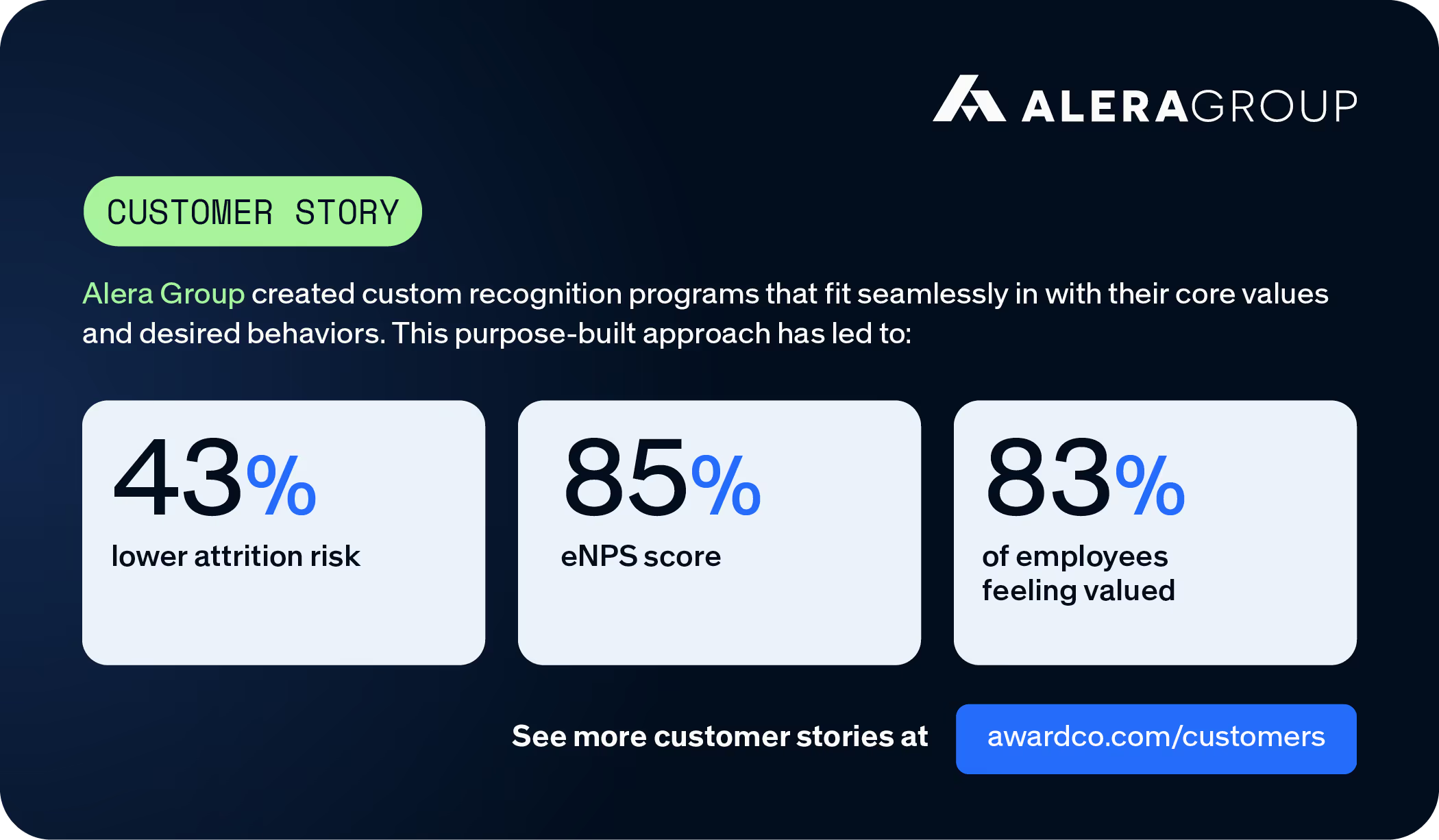
See more customer stories at awardco.com/customers.
Where recognition stands in the current work environment
Why even ask the question “Why recognition?” It’s not just a hypothetical or a marketing pitch—we’re asking the question, and providing the answers, because the vast majority of organizations still have a long, long way to go.
The statistics do the talking:
- 75% of employees wish they felt more appreciated at work
- Only 27% of employees feel sufficiently recognized
- 60% of managers believe they give enough recognition—only 35% of direct reports agree
- 50% of employees feel undervalued
- 45% of employees receive recognition only once a year or less—only 33% say they’re recognized at least once a quarter
Despite the fact that recognition can totally transform employees’ mindsets and experiences, the vast majority of them feel overlooked and uncared for, which has led to the disengagement plague of pandemic proportions we’re facing now.
Let’s change that. Employees need to feel valued in order to perform their best—they’re not lazy, and they’re not selfish; they simply want to be seen and supported as individuals who give hours of their lives every week to their work.
The measurable ROI of employee recognition
Here’s the part that justifies the time, effort, and money that organizations need to put into upgrading their recognition programs. This process may feel daunting, but the good news is that effective recognition is simpler than you think, and the return you can expect is well worth it.
Impactful rewards and recognition in all of its forms can completely evolve your culture, help you hit organizational goals, and impact your bottom line. The numbers don’t lie—recognition in all its forms can:
- Make employees 2.2x more likely to go above and beyond their daily duties
- Increase employee productivity by 22%
- Raise employee performance by 14%
- Lower voluntary turnover by 31%
- Boost employee engagement by 40%
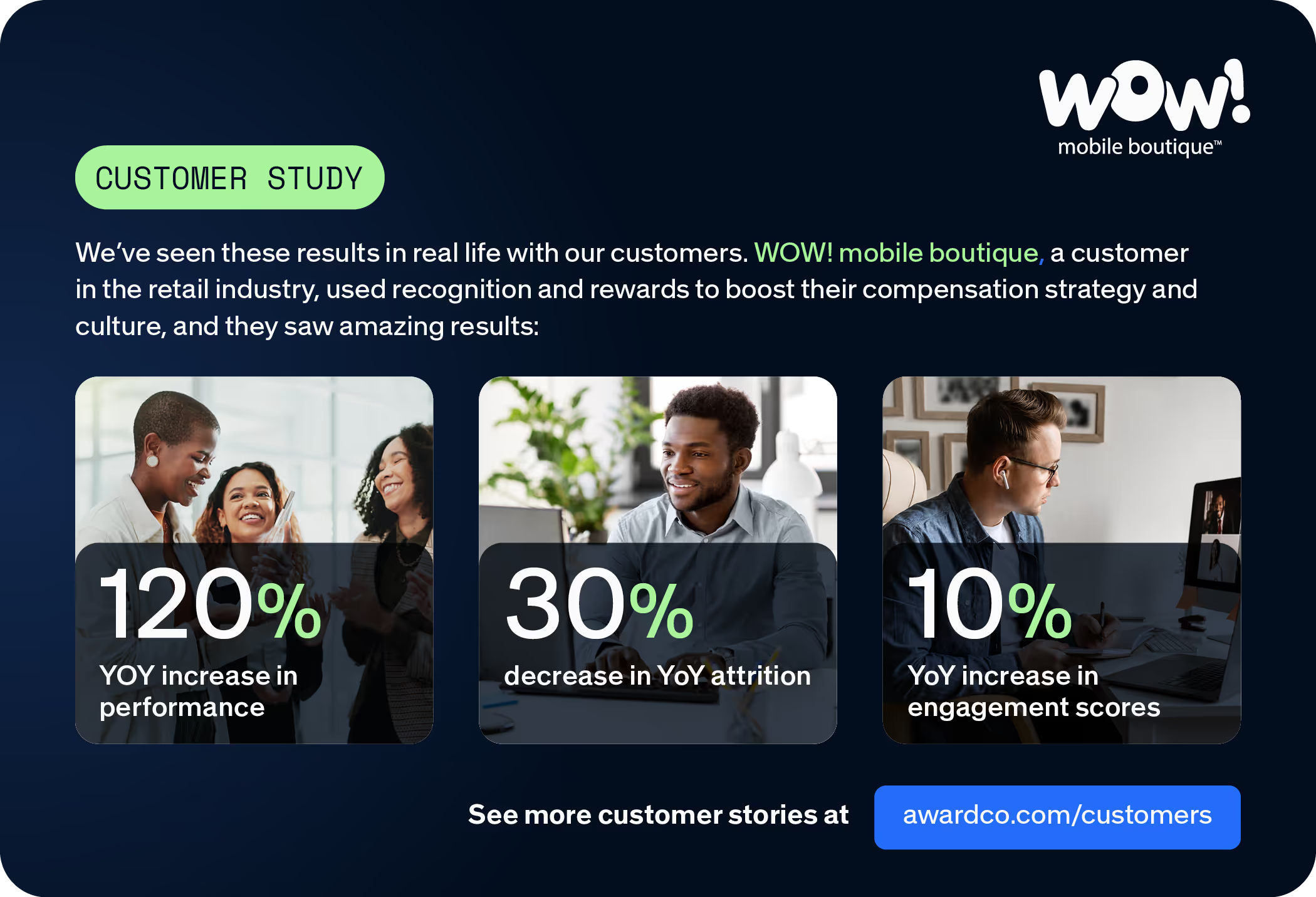
See more customer stories at awardco.com/customers.
As a recap, employee recognition increases happiness, satisfaction, relationships, mood, and motivation. It also boosts productivity, performance, retention, and engagement. There’s a reason that the highest performing companies are 10x more likely to have recognition programs they invest in.
Strategies for implementing modern recognition solutions that actually work
If employee rewards and recognition are so great, why do we need to answer the “Why recognition” question? It’s because many organizations have tried these strategies without sufficient knowledge or preparation, leading to negative results and wasted money. This then leads people to believe that the importance of recognition is exaggerated or outright wrong.
Nothing could be further from the truth. It’s true that poorly executed recognition strategies are a waste of time and budget. But well-thought-out, intentional recognition programs are the key to business success in 2025 and beyond.
Below are the basic best practices leaders need to build their own employee recognition strategy.
1. Balance monetary and non-monetary recognition
Employee recognition does not have to be monetary to be effective. This is the biggest misconception in the industry. A study by McKinsey found that up to 55% of employee engagement is driven by non-monetary recognition. This means that the majority of employee engagement comes from things like shoutouts, compliments, and genuine gratitude.
Understanding the impact of non-monetary recognition truly is a win-win for everyone. Organizations will save money while employees will feel valued.
Non-monetary recognition strategies include:
- Public or private acknowledgements. Depending on the preference of the employee, give them a shoutout, thank them for their work, and offer specific compliments either publicly or privately. Company all-hands meetings, social media posts, or manager 1:1s are all great places to do this.
- Monthly awards. Drive productivity and show appreciation with monthly or quarterly awards that recognize employees who perform the most tasks, do the most selfless actions, show up on time the most, etc. Use your creativity and try to reach every team equally.
- Peer recognition and/or nominations. Peer recognition raises employee performance by 14% because it’s always personal and specific. Empower employees to recognize each other for daily actions and efforts through official channels.
- Extra PTO. Extra vacation days or spontaneous breaks are a great way to show employees that their work is valued. They’re also great at recognizing employees’ mental health needs and supporting their work-life balance.
- Professional development opportunities. Giving time and resources to help upskill employees and assist them in hitting their goals not only shows that the organization will support them—it creates a workforce that’s talented and trained in relevant skills.
2. Make recognition more frequent and meaningful
Every single employee deserves to be recognized for who they are and what they bring to the table. Only getting recognized once a year is supremely insufficient, frankly.
To ensure everyone is being recognized at least a few times each year, use the Celebrate, Recognize, and Reward framework.
Celebrate
The base of the framework is Celebrate, meaning celebrate everyone for who they are and the unique personalities, skills, and strengths they bring. Three examples of celebrating everyone include:
- Birthdays. Never, ever, ever miss an employee's birthday. Celebrations don’t have to be grand, and gifts don’t have to be expensive—the important thing is to make it personalized and meaningful to the recipient to ensure they feel seen and important.
- Service anniversaries. The tradition of celebrating service awards every five years is outdated. Just like birthdays, service anniversaries should never go by without celebration. And please don’t settle for useless acrylic trophies, plaques, or other forgettable items. Give each recipient something meaningful to them for all that they did for the company in the last year. (And remember: it doesn’t have to be expensive or even monetary!)
- Holidays. Holidays are a great way to make sure everyone feels appreciated. Besides the standard holidays, consider celebrating fun ones, like National Pizza Day or International Day of Friendship. Also, take advantage of Employee Appreciation Day on the first Friday of March!
Recognize
The Recognize layer is a step above Celebrate because this represents recognizing high performers. Good work happens in the workplace every day, so organizations need official channels to recognize and reward those efforts.
After all, 92% of employees are likely to repeat specific actions when they’re recognized for it. When their efforts are ignored…well, that percentage drops fast.
The methods for recognizing high performers are as varied as the tasks your employees are completing, but here are a few effective suggestions:
- Spot recognition. Let anyone and everyone recognize good work on the spot, as soon as they see it.
- Peer-to-peer recognition. Empower employees to recognize their colleagues for the work they see on a day-to-day basis that leaders might miss.
- Incentives. Incentives are a great way to drive greater performance and also reward people who go above and beyond. Sales incentives, wellness incentives, attendance incentives, and safety incentives are just a few ideas—create ones that resonate with your people!
- Value-driven recognition. Recognize people who exemplify the core values of the organization to reinforce and strengthen your culture.
Reward
Don’t misunderstand: Rewards should fit in each level of the framework. Gift cards to a favorite restaurant are great birthday gifts. A personalized care package is a great reward for a remote employee hitting an incentive goal.
However, this level of the framework means to really reward top performers. A terrible mistake to make is to assume your highest performers can be ignored because they’re already engaged and productive. That mindset will simply lead to the turnover of your best people.
Instead, tailor recognition to reward the behaviors that define high performers. Are they extremely innovative and creative? Do they proactively tackle responsibilities? Do they provide high-quality work on time without fail?
Offer rewards that match those behaviors, such as greater flexibility to work how they prefer, professional development to keep them moving forward, or projects with other high performers.
3. Tie recognition into core values
Core values are a great way to help employees stay engaged in their work—that is, unless values are just words on a wall that employees don’t feel connected to.
By tying recognition into core values, organizations can reinforce those values, tie each employee’s work into their mission, and give everyone more purpose at work.
Here’s an example: Mike goes above and beyond for a project, pouring extra effort into it whenever he can. Jenny, his manager, sees all this effort and knows one of their company values is Initiative. She gives him a shoutout in front of the company, praising his initiative and explaining how Mike’s extra work led to the project’s success. Mike then knows his efforts are appreciated and is that much more willing to continue to excel.
This is a basic example, but even here we can see how much more appreciated Mike would feel and how motivated he’d be to continue to show initiative.
By recognizing and rewarding value-based behaviors, organizations can build a company culture truly built on what they believe in.
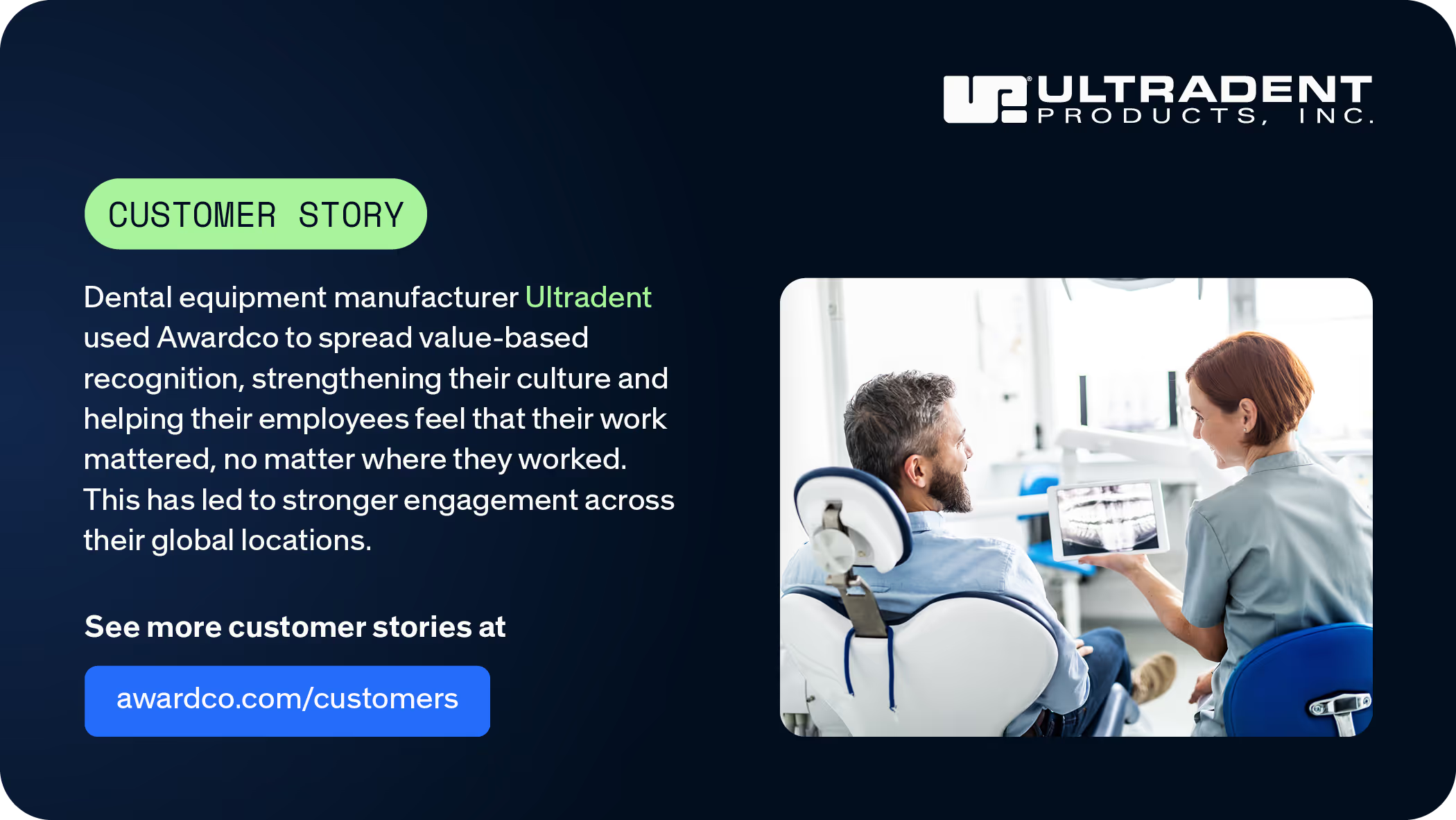
See more customer stories at awardco.com/customers.
4. Customize recognition and rewards to fit the recipient
Impersonal rewards and recognition is the easiest way to undermine any efforts the organization is making. Put yourself in an employee’s shoes for a moment: imagine putting in great work and then getting a gift card to a restaurant you dislike.
The company thinks they did a great job rewarding their employee, but the employee is frustrated and gives the gift card to someone who would actually use it (or throws it away).
This disconnect is a major issue, and one that needs to be eliminated. To do so, personalize your recognition and rewards to suit the recipient. Here’s how:
- Get to know each employee. Send out a survey to new hires to share their interests, favorites, etc.
- Utilize 1:1s. Have managers ask employees what their preferred method of recognition is. Public, private, written, verbal, etc.
- Digitize the process. Sending personalized messages or gifts to every employee is a lot of work—unless you use a recognition platform like Awardco. Then, the whole process is automated and the recipient has the power to choose rewards that they’ll love.
5. Take advantage of an employee recognition platform
All of these strategies and ideas would take up a lot of HR’s time and energy if they were forced to do them manually. Luckily, there are many rewards and recognition vendors out there who can automate the administration of recognition administration and reward fulfillment, allowing managers and HR leaders to focus on the human aspect of the process.
The right rewards and recognition solution:
- Lets you build customized recognition programs to fit your industry, workforce, budget, and business needs
- Allows for custom branding and utilizes integrations to fit recognition seamlessly into your existing culture
- Takes the manual work out of recognition and rewards, saving you time and money, all while empowering greater reach and engagement
- Provides real-time analytics and reporting to show clear ROI with specific data
Do your due diligence to find the recognition solution that’s right for you, and see the true benefits of modern rewards and recognition for yourself.
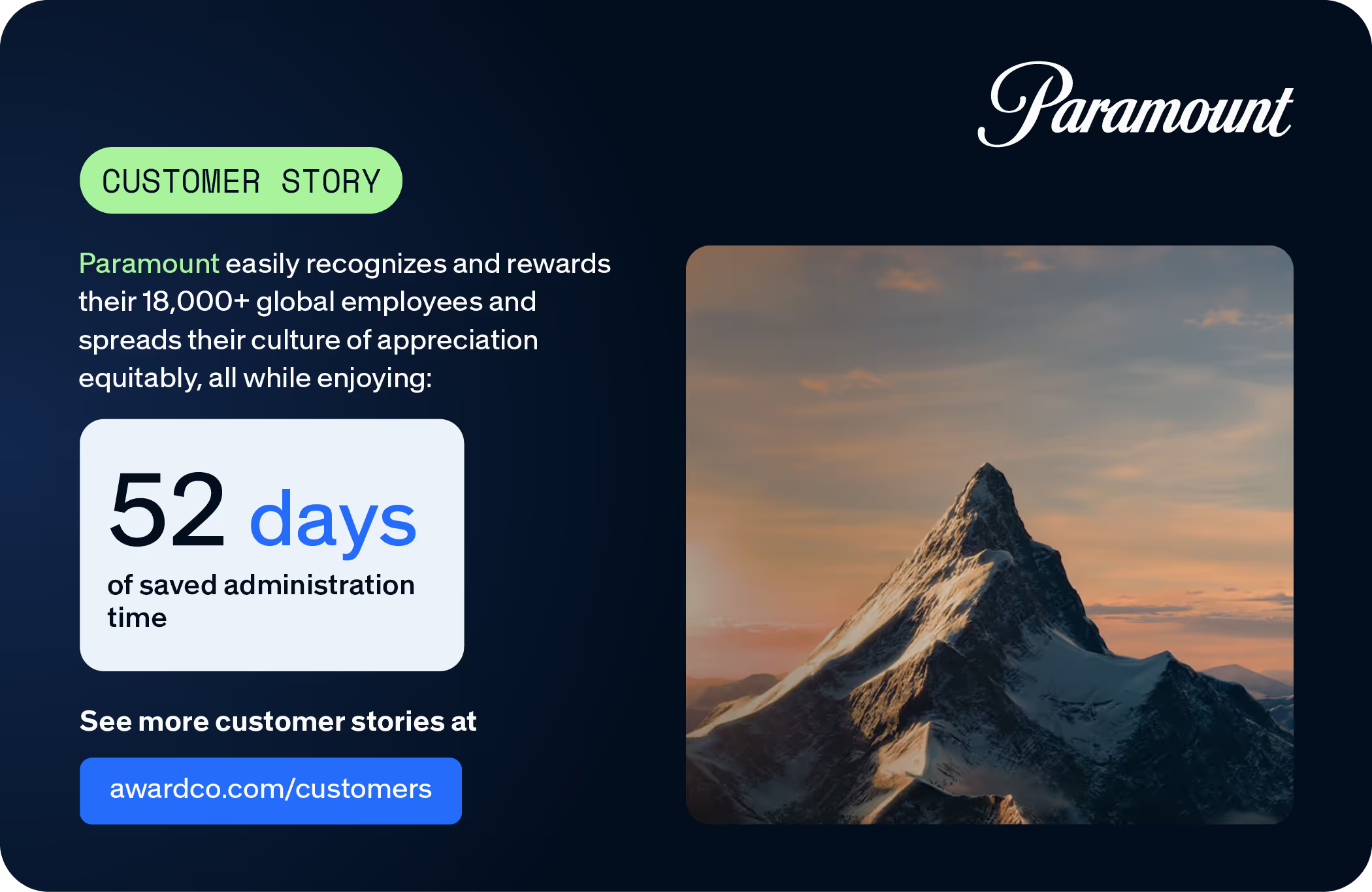
See more customer stories at awardco.com/customers.
Recognition: your anchor in the stormy sea of the workplace
A meager 21% of employees are engaged at work, and that number is dropping, creating a whirlpool of disinterest that’s sucking many organizations down. It’s time to weather this storm of disengagement by investing in intentional, impactful employee recognition programs.
Not only will these programs create a workplace where employees actually enjoy spending time, raising both their happiness and life satisfaction and helping you stand out from the competition, they will improve productivity, engagement, and your bottom line. Effective recognition programs create a flywheel of appreciation that benefits all.
So what is the answer to the question “Why recognize?” It’s because we’re all human, and we’re all healthier, happier, and more effective in positive, appreciative environments. By intentionally spreading appreciation to your people, they’ll respond with better work, helping you not only weather this storm, but forge a new path to sustainable success.
Roll out customized, purposeful, and affordable recognition with Awardco, the industry leader in meaningful appreciation. Get a demo today.


